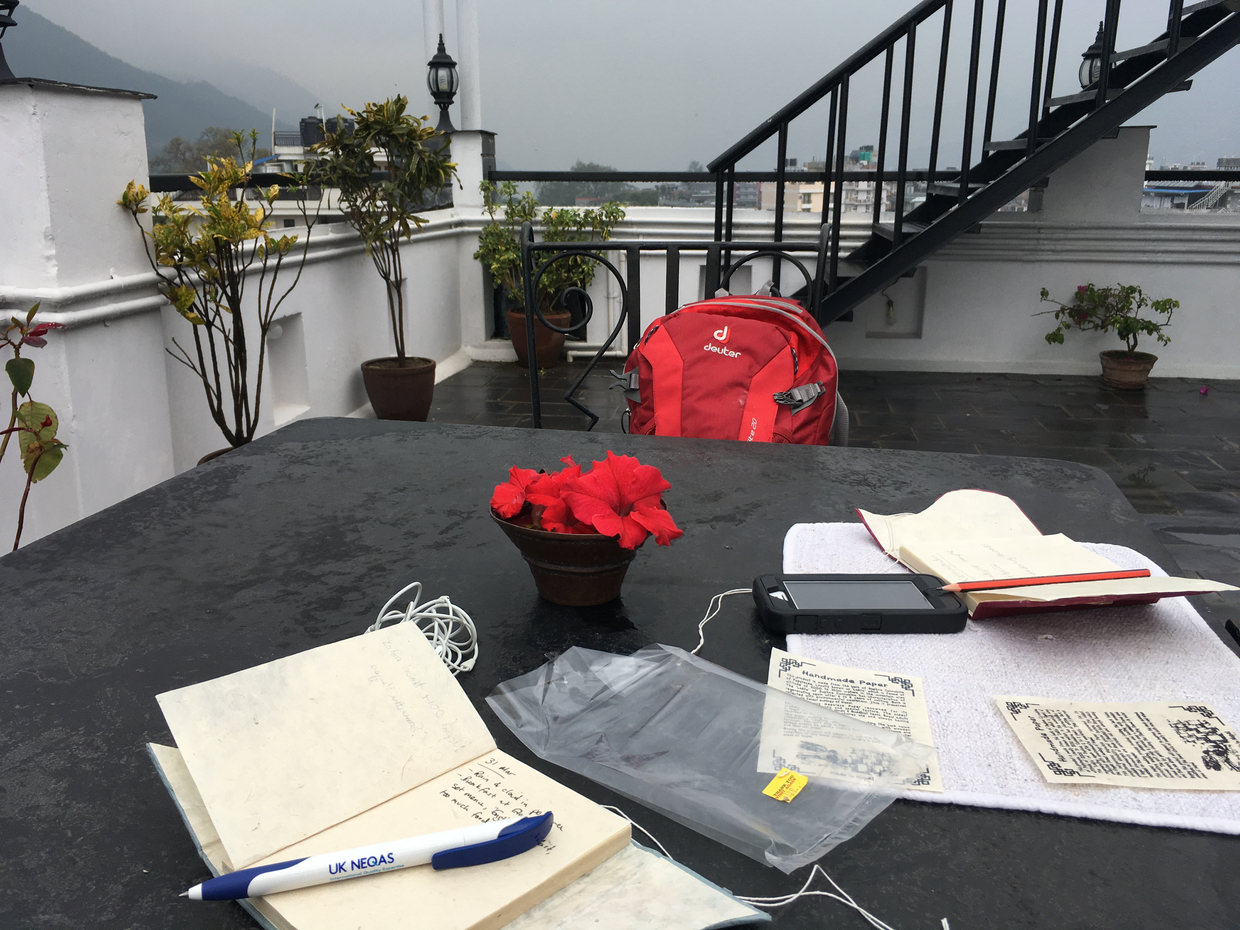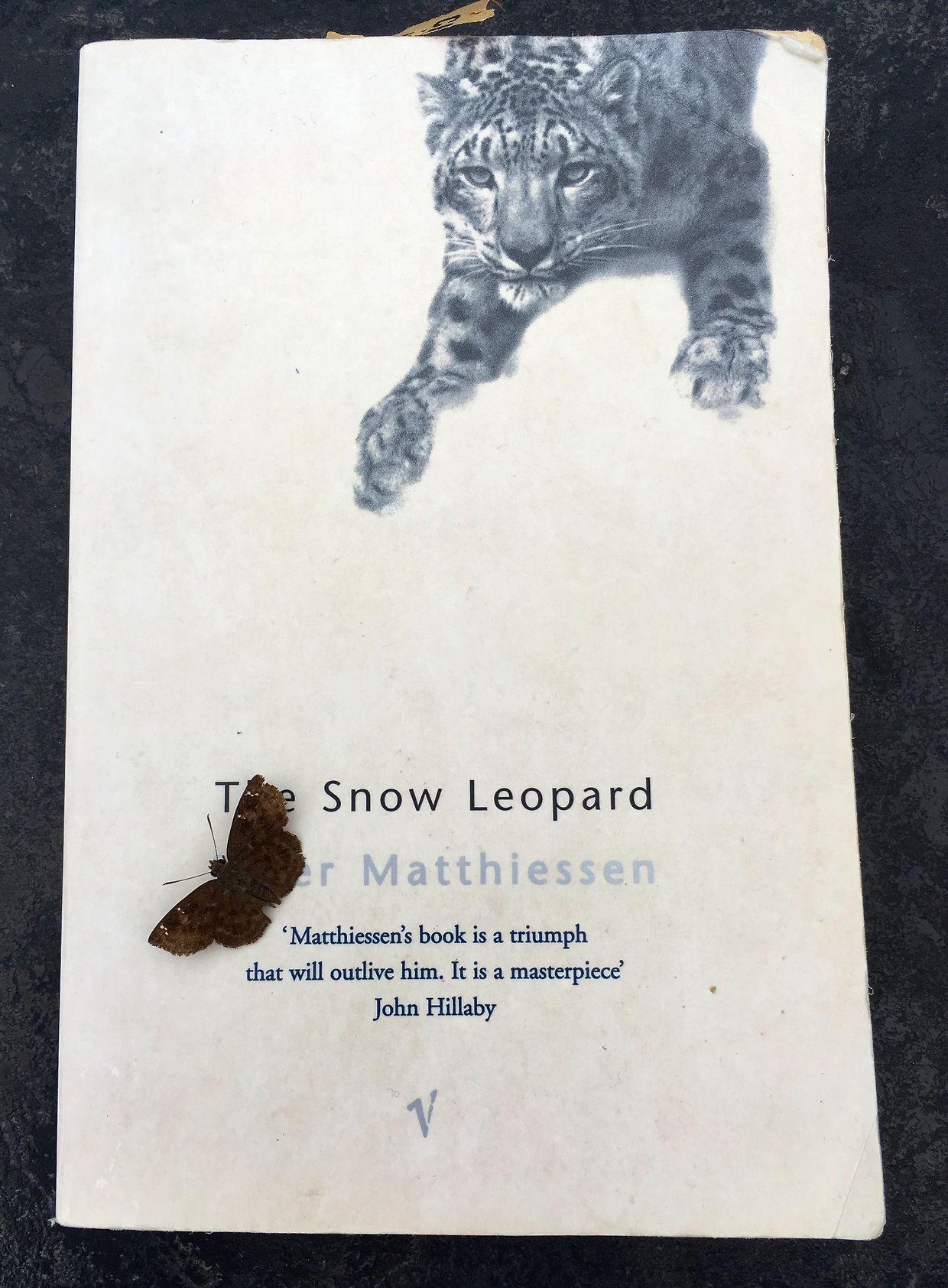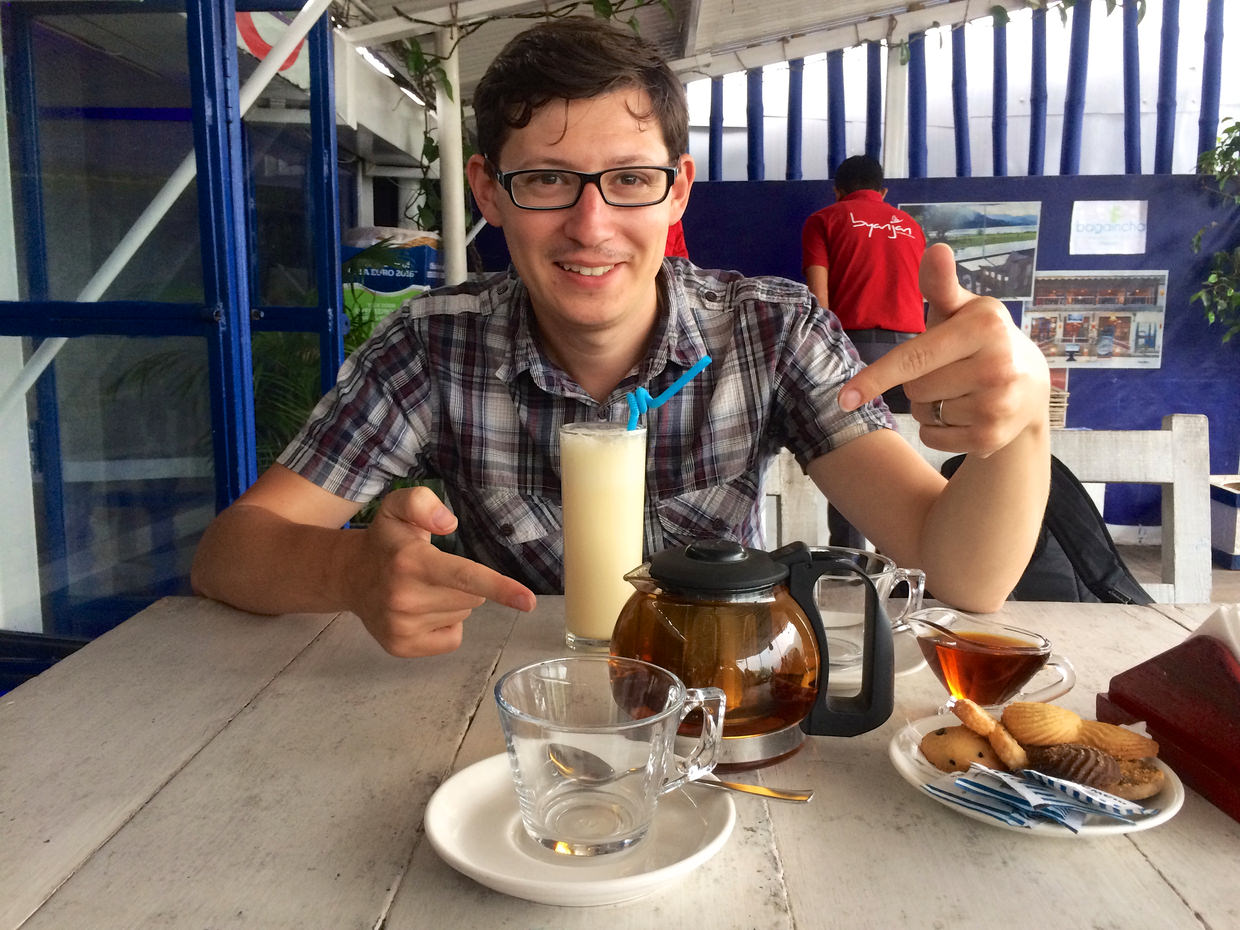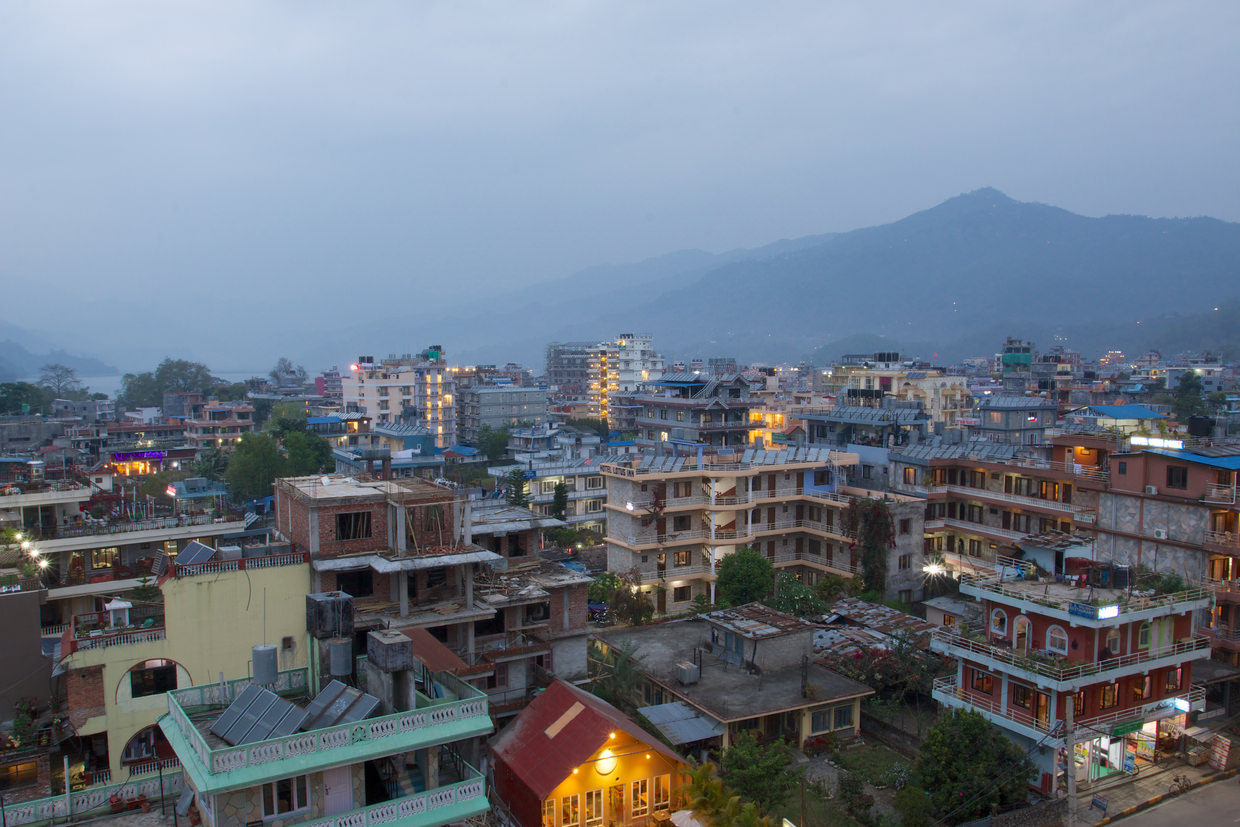Cooking Dal Bhat and Momos
Glacier Hotel
We didn’t return to Middle Path simply because it was booked up. Instead we opted for a more expensive but luxurious room at Glacier Hotel and Spa (there is no spa). We wanted carefree accommodation in the city, and treated ourselves to the honeymoon suite, the biggest room on the top floor for 4 nights.
While there was luxury, the bed and views were excellent, it wasn’t without its faults. It took the hotel 2 days to get us a working key. The beautiful looking shower and jacuzzi did not work — the electrics felt dangerous and the water pressure was too low both for a waterfall shower and to fill up a bath before the water turned cold, the shower head was too low, it was laughably pathetic. I’d hoped to have a lockable safe for all our camera gear, if it’s in a safe it’s insured. But the safe didn’t work, and when pressed for another one (you could pick them up) the hotel lied that all safes in the hotel were broken. Not a good start.
We did eventually warm to the place, but it wasn’t value for money or the experience we wanted. The a la carte breakfasts were delicious, the BLT toasted sandwich and chips was a perfect post-Sarangkot morning meal.
It probably didn’t help that the weather was so awful. For everyday until our last it was cloudy or raining, hotter than before, but not good enough to paraglide, ultralight or trek to viewpoints. Nepal is for the outdoors.
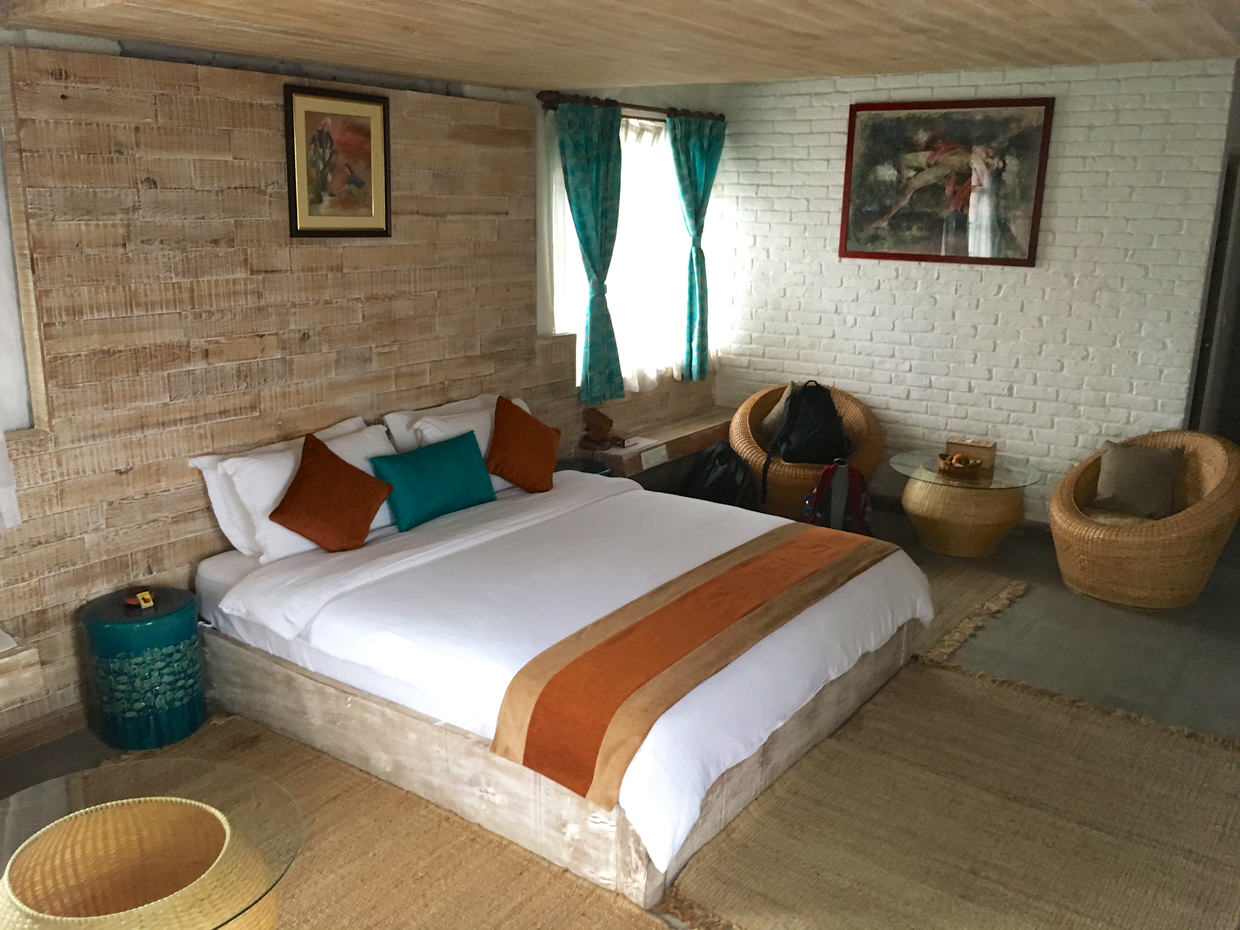
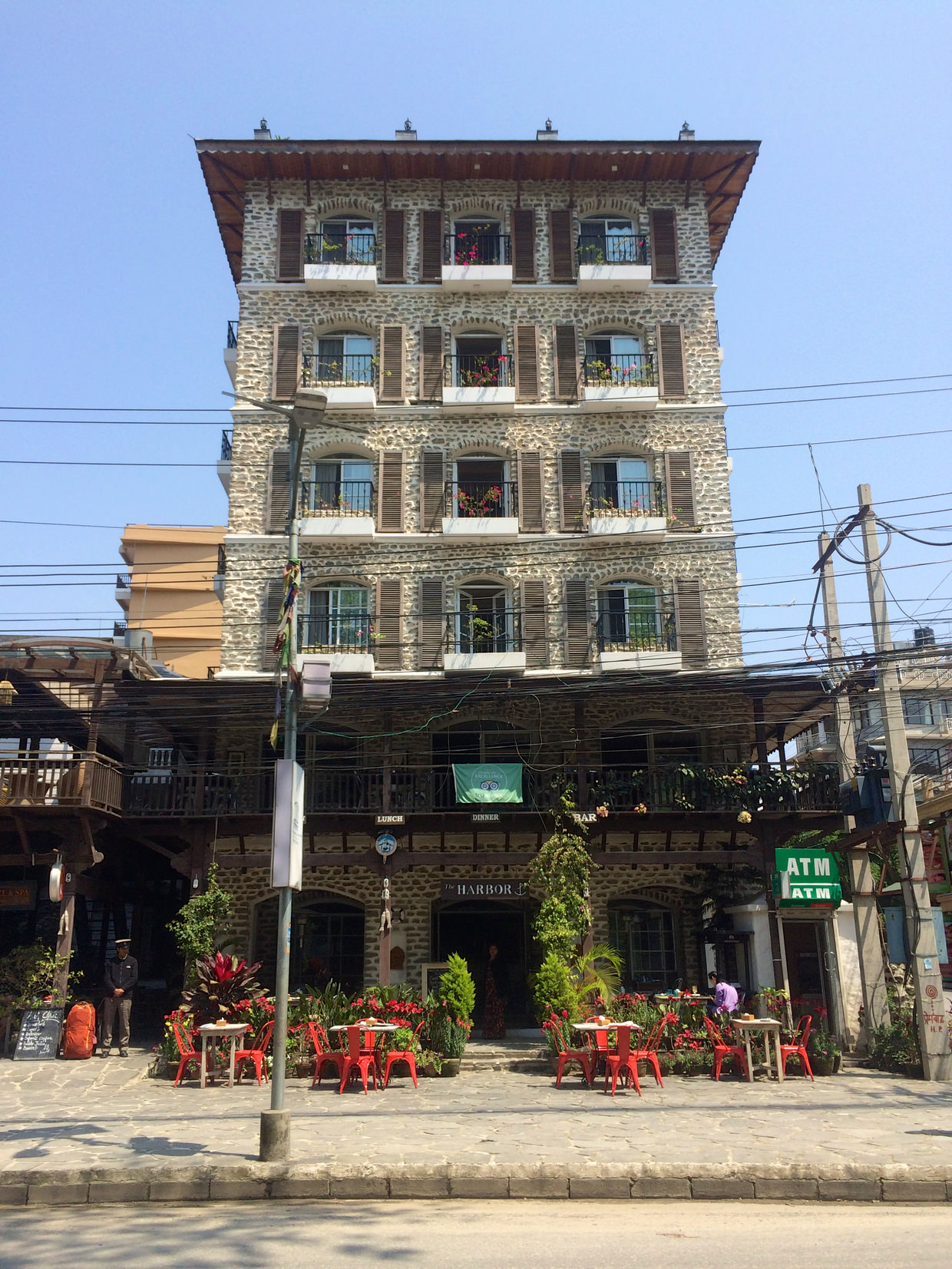
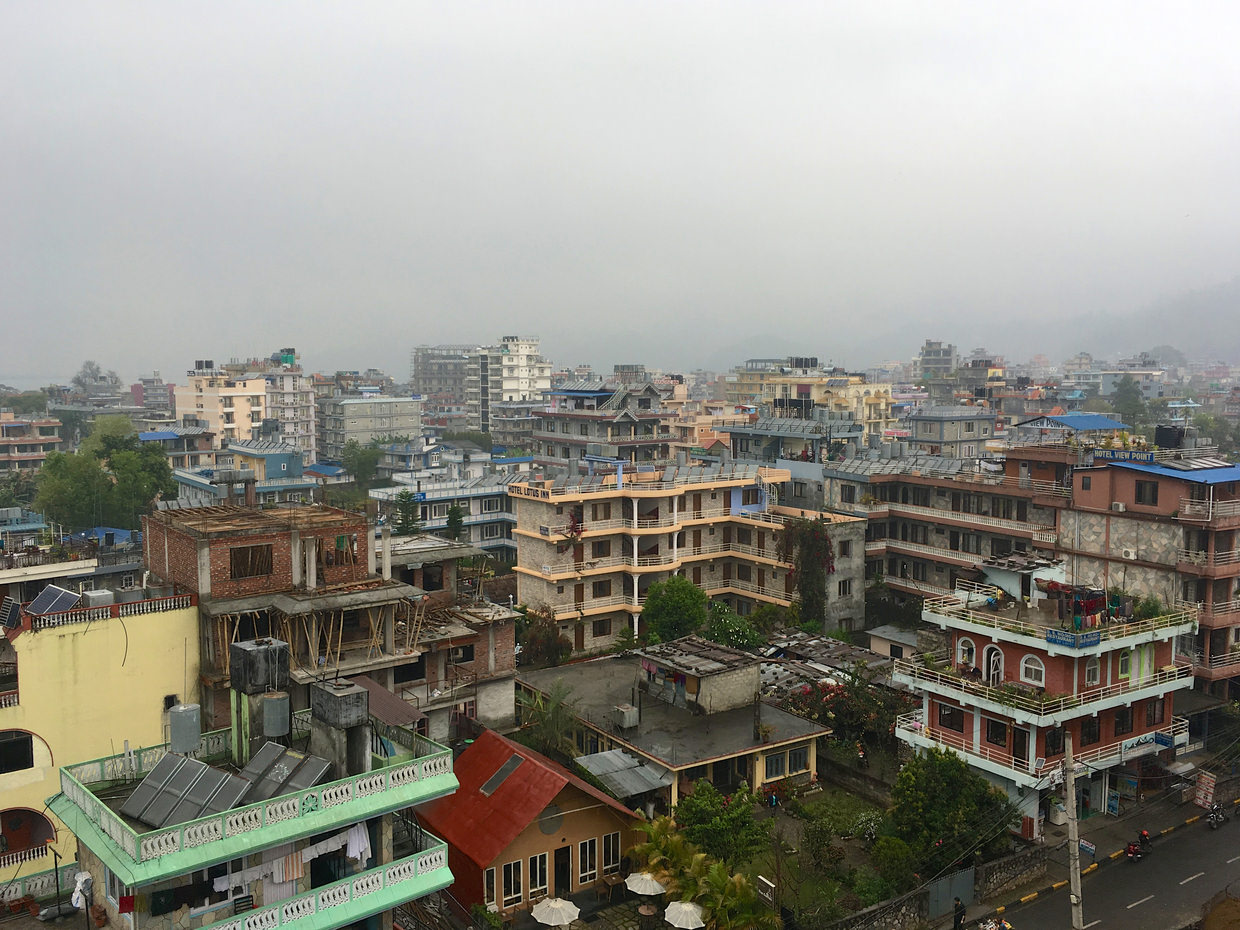
Shopping in a downpour
We had lunch and milkshakes at old fave Caffe Concerto. That night we dropped off some laundry and meandered into town to shop. We haggled for t-shirts and cashmere scarves, hopping in and out of shops to avoid the rain, perusing the oil paintings of Machapuchare, soaking trainers in deep puddles. At BusyBee we had drinks and chips to escape the showers, live Squash matches were showing on the big screen.
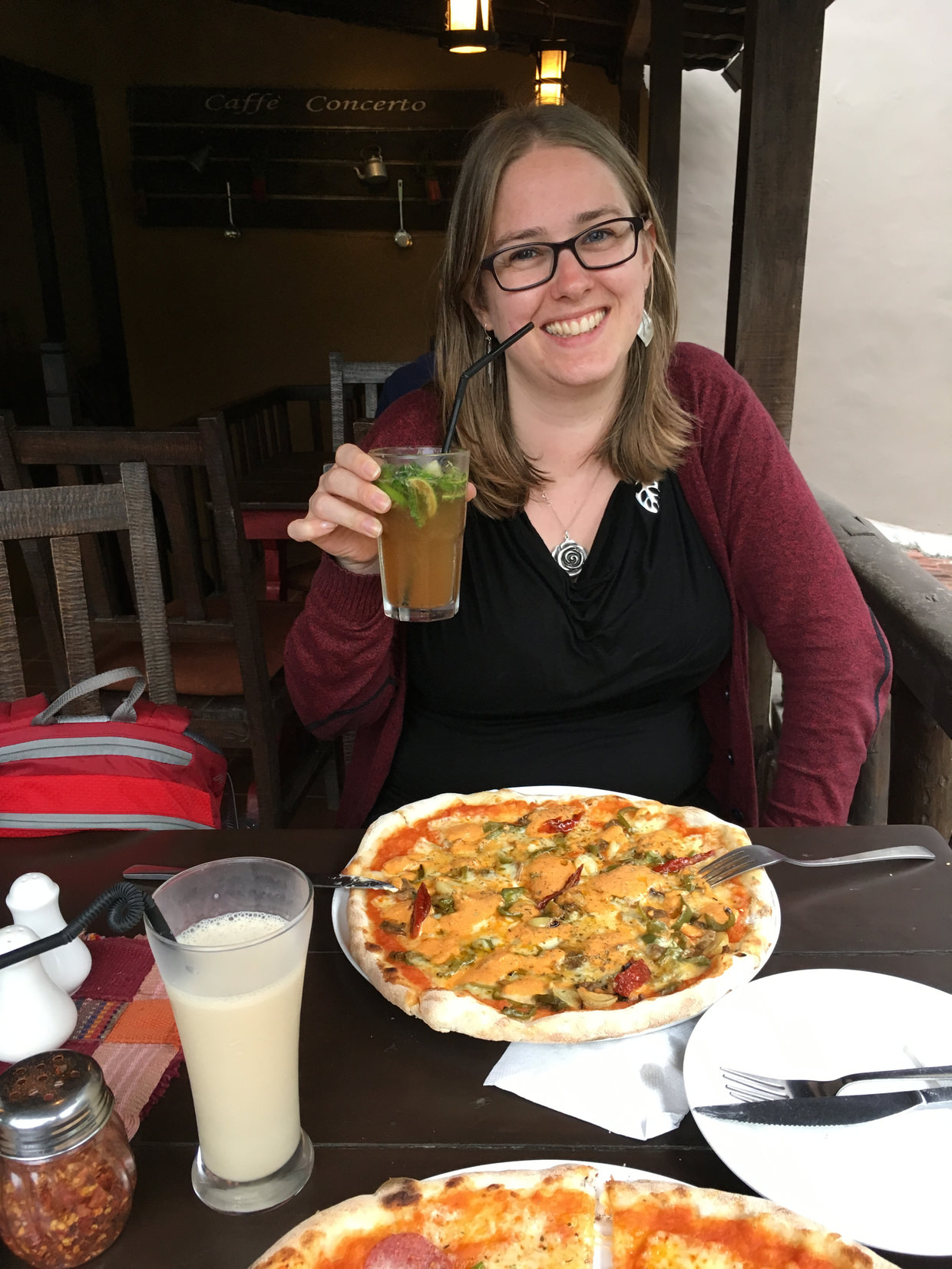
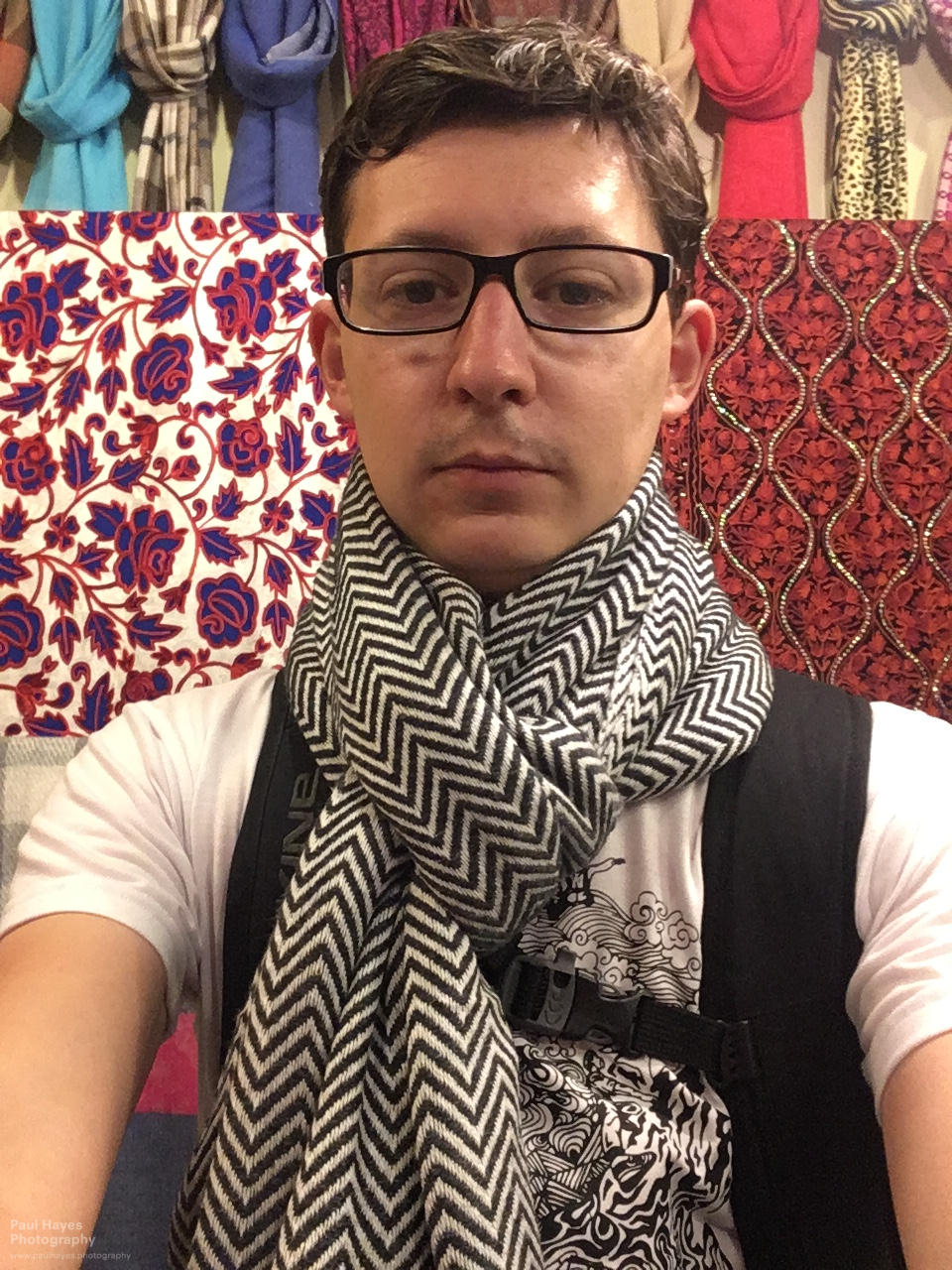
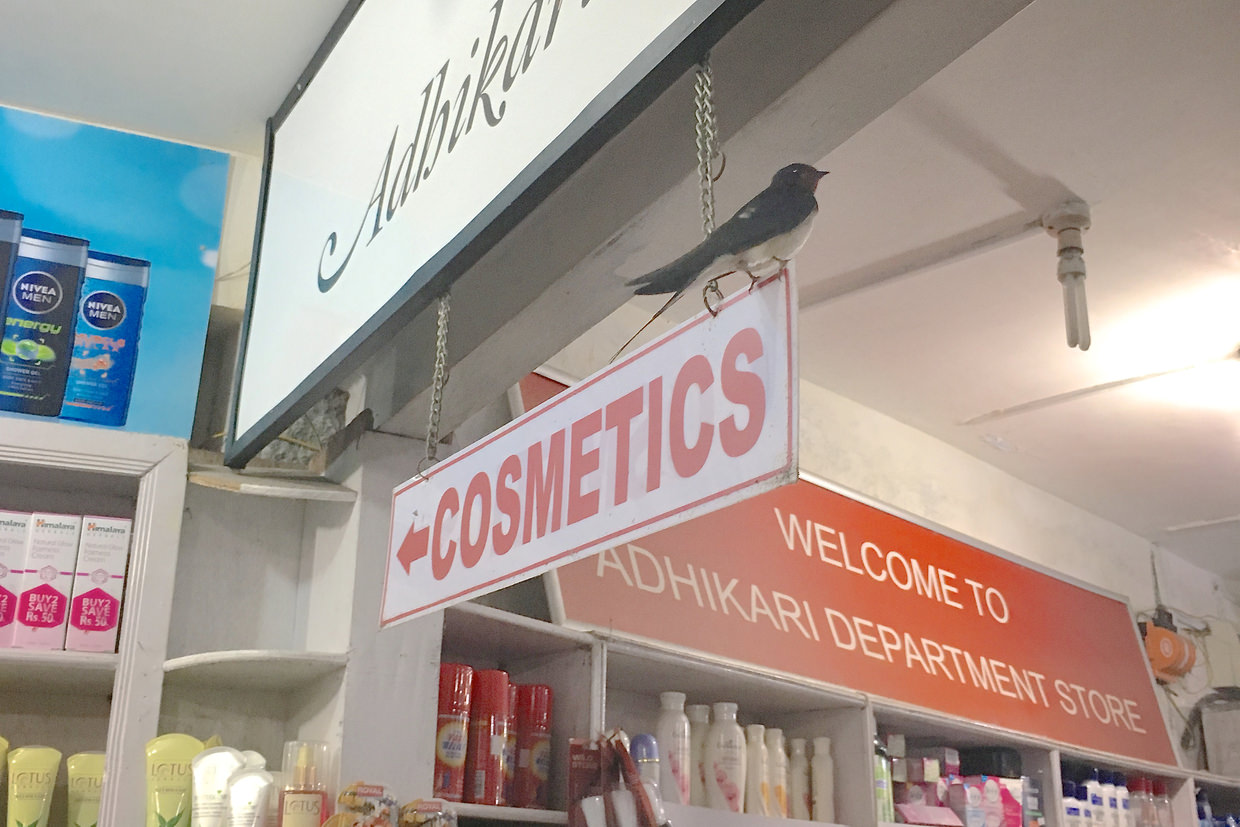
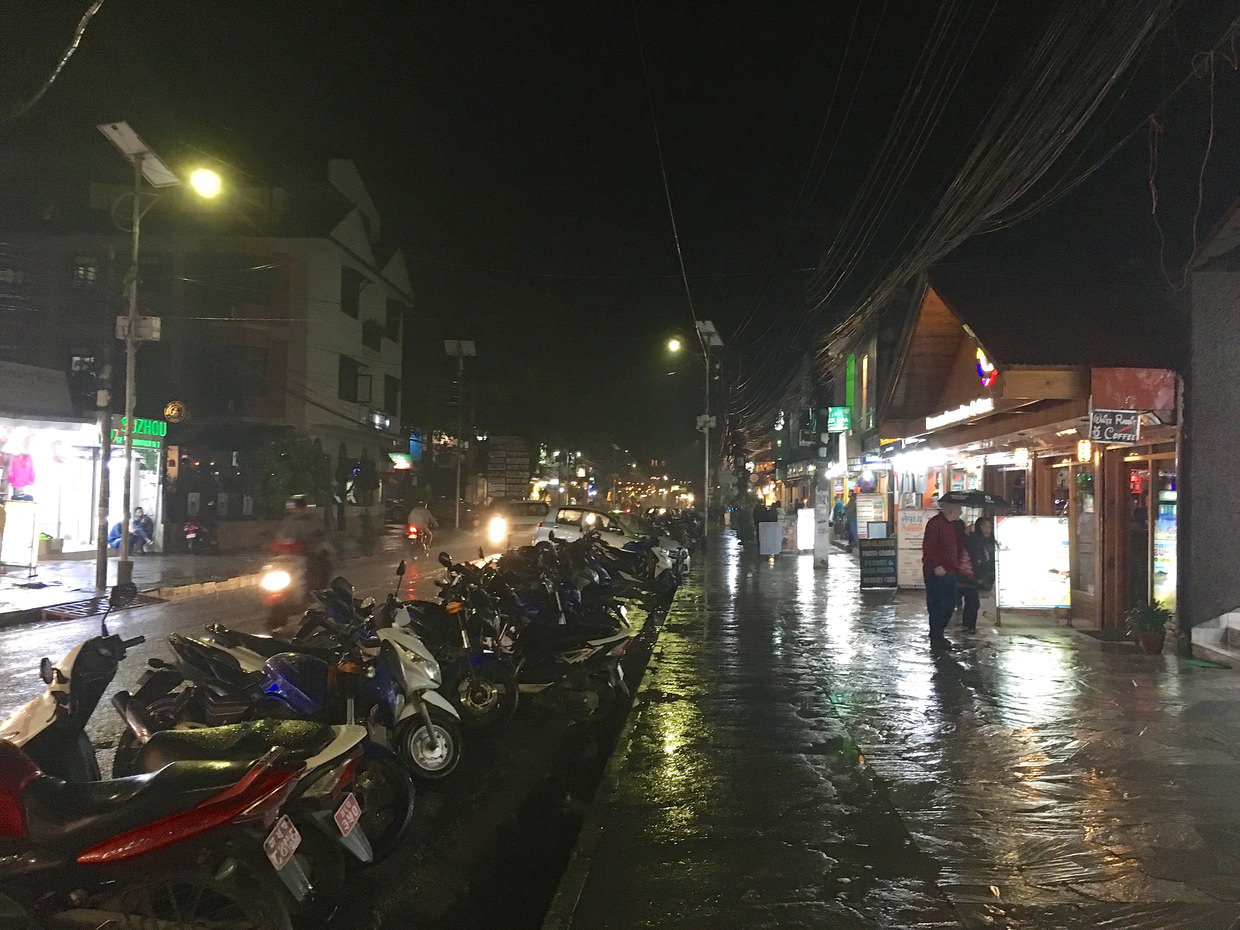
How to cook Dal Bhat
Wherever we travel we love to do a cooking course. Food is culture, and when cooking there’s plenty of opportunity to talk about life and work in Nepal. Samantha booked a lesson through Backstreet Academy, a Dal Bhat lesson for two in the Tibetan camp near Devi’s fall. Perfect for a rainy day.
Hotel Glacier dropped us off, free of charge, and Karma greeted us, a Tibetan student, he was our “facilitator”, and showed us to the camp. Through a gate we passed into a green field surrounded with single storey stone houses. Cattle grazed on the field, and children played. At the back, a house with a garden, and our Tibetan teacher, Yangchen Chamdo. Bells rang out in ceremony from a nearby temple.
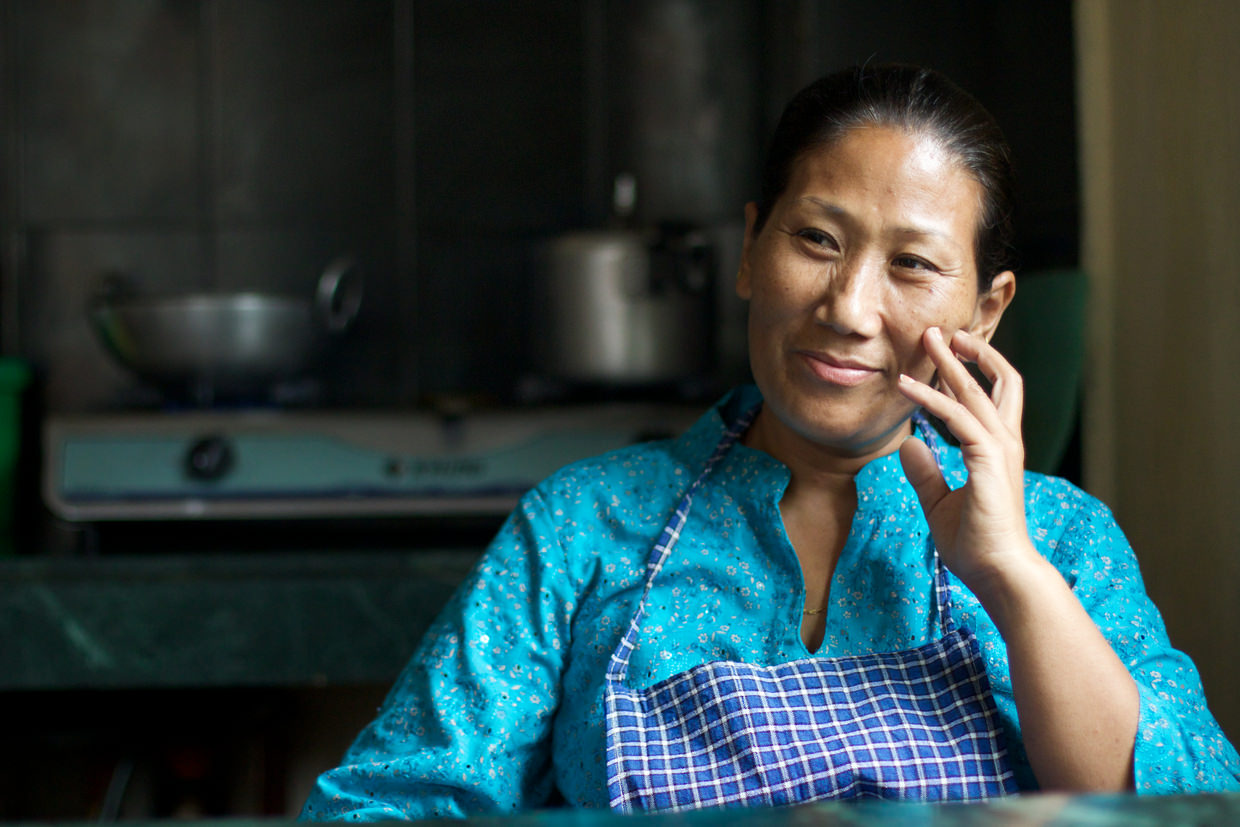
We sat around a green stone table and Yangchen showed us how to make all the parts of Dal Bhat. Sam, as ever, was the keen student — taking notes throughout. Karma on the other hand was excited to talk to me about English football.
300g of lentils went into the pressure cooker to begin the Dahl, mixed with turmeric, masala, oil and salt. Cook for 15-20mins.
Meanwhile we prepped the curry — onions, tomatoes, turmeric, potato chunks, green beans, salt, masala, peas, cauliflower and carrot. Adding one after another and cooking in a wok over a hot gas hob.
The chutney consisted of onion, tomatoes, chilli and salt which we simmered together in a frying pan.
Dahl lentils, vegetable curry, fresh chutney and rice. Prepared from scratch in about an hour. Delicious too, it’s worth adding.
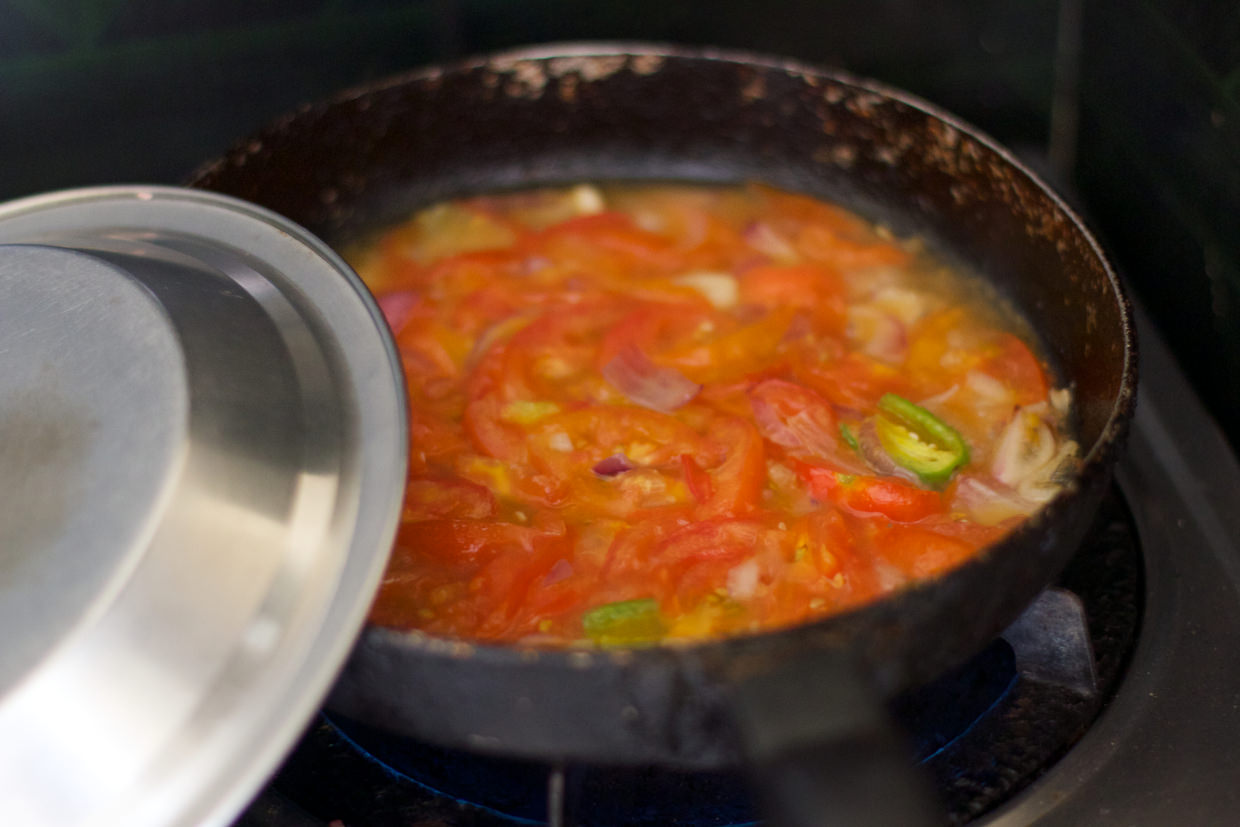
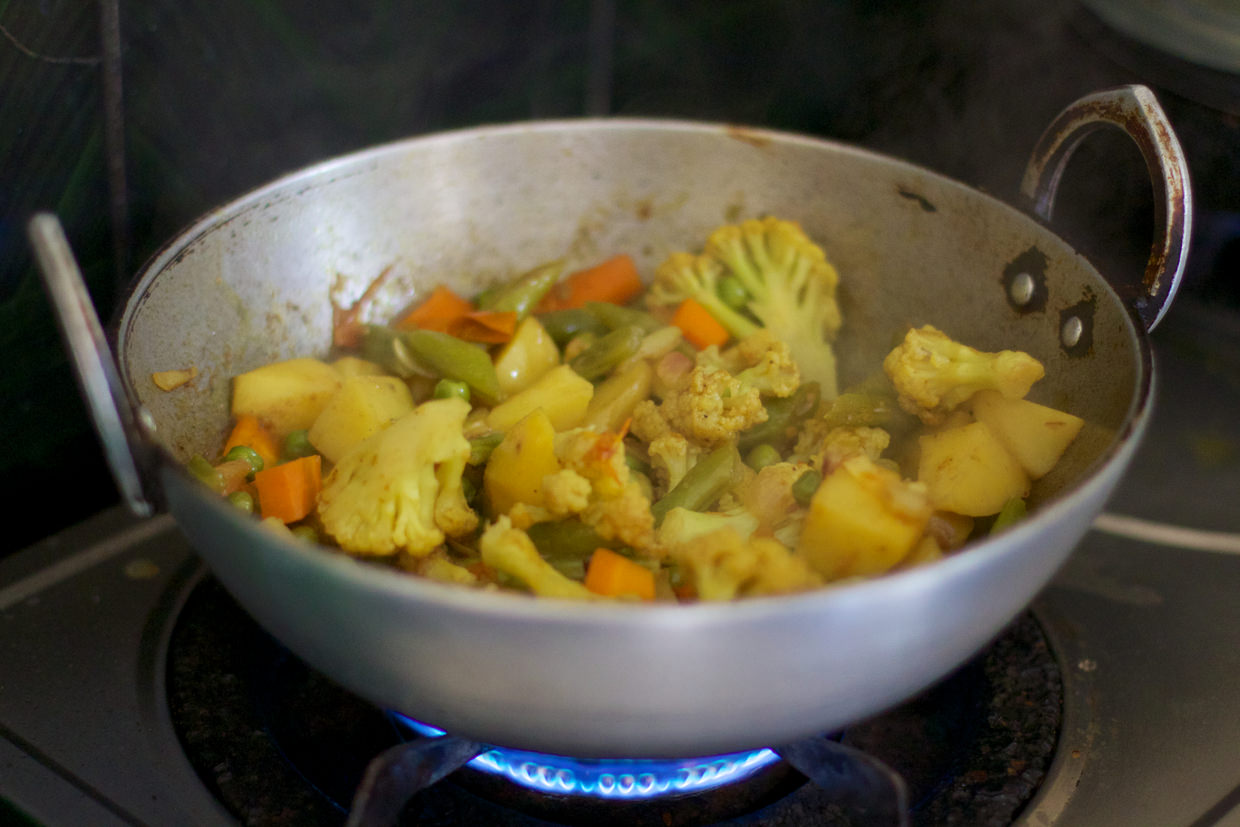
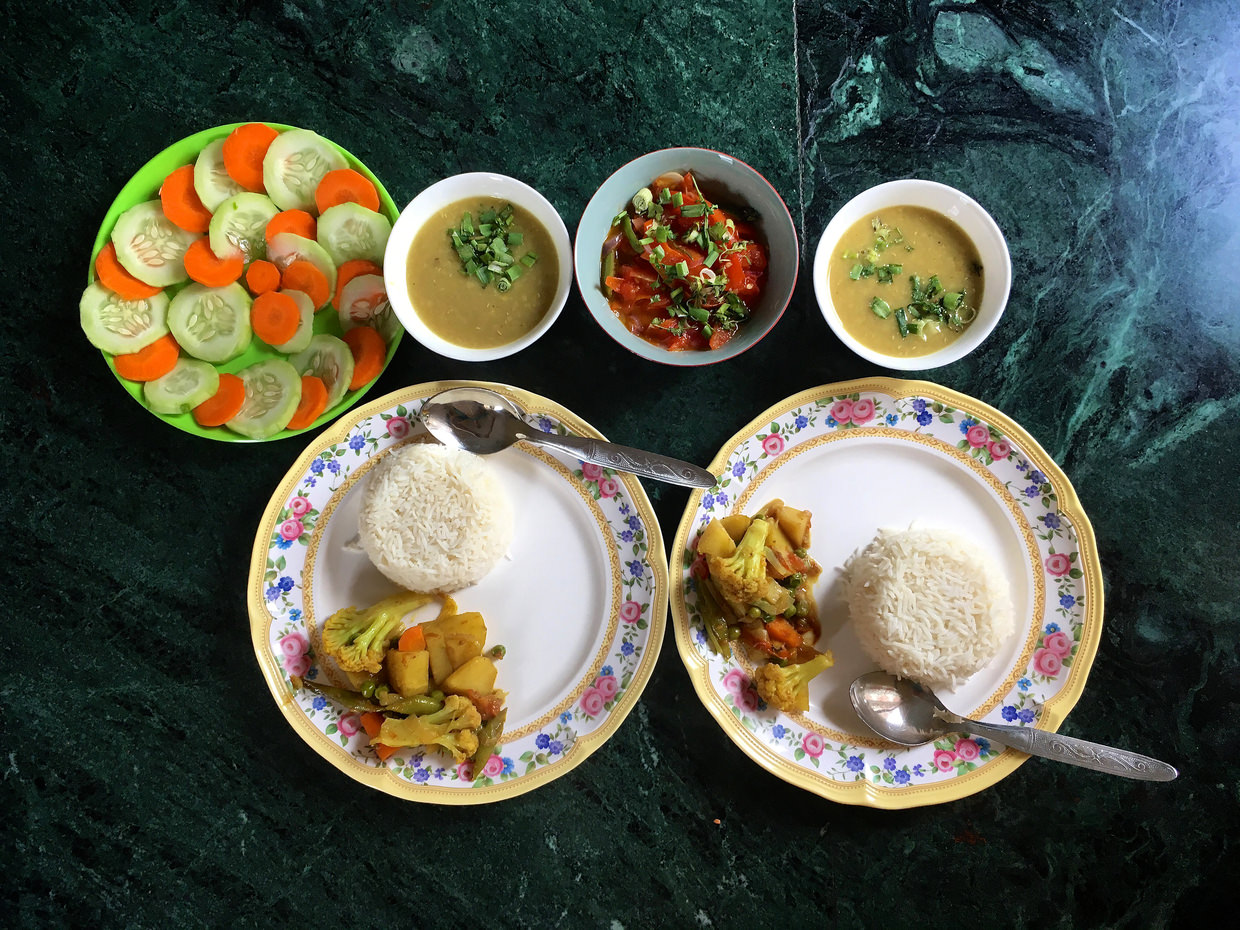
Devi’s Fall
It was so close to our cooking course we couldn’t not go it. Outside the entrance is surrounded with tatty tourist shops, and bus loads of Indian tourists come and go. One shop has a video playing, showing how they make their Tibetan singing bowls.
Devi’s Fall is essentially a big hole into which a river disappears underground. It’s named after an accident. There isn’t much to see, and little amateur attractions have been added to keep you entertained. A stone sculpture of the Annapurna massif, a garden, figures with their faces cutout so you can pretend to be them — like you’d see at a Victorian fairground. We must’ve been here all of 20 minutes.
In the hot haze of midday we walked back to lakeside, amidst the car horns and noise of construction. We’d return again in the afternoon to make Momos.
How to make Momos
We booked this directly through Yangchen, and joined a group of medics also taking the course. Jamie, Keir, Peggy, Catherine and Abbi. With 8 of us in the kitchen around the same table it got crowded.
Making Momos is more involved than Dal Bhat, where the first lesson just touched an hour this one pushed upwards of 3, even with our assembly line. Momos are a type of Nepalese dumpling.
We started by making a dough, kneading about 2kg of self raising flour — we needed to make a lot.
For the filling we grated potato, diced cabbage, added paneer, green papaya, coriander (including stems), grated carrot, finely chopped onions and a handful of spring onions.
From the dough we pulled out chunks which we flattened into small circles. A small amount of filling in the middle, then a pinch and crimp technique to seal it and make that characteristic momo look. Each completed momo is placed into a steamer, taking care not to let them touch, then they’re all steamed for 15 mins. We took a couple of the momos and fried them in oil to create a crispy alternative.
Stuffed with momo goodness, 5 of us crammed into another one of those tiny Suzuki taxis and headed back to Lakeside. With Sam perched on my lap, 4 of us squished in the back, we hurtled past Devi’s fall, around the lake and back to the hotel.
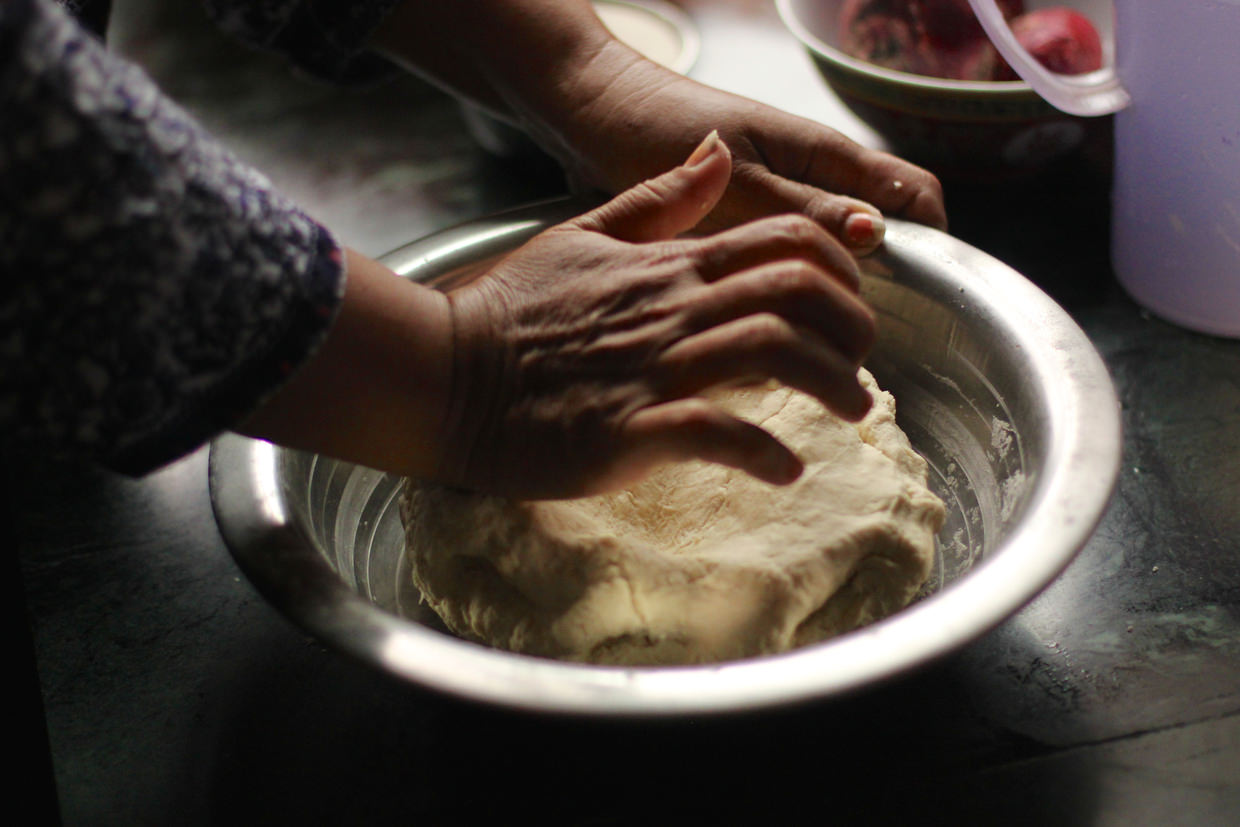
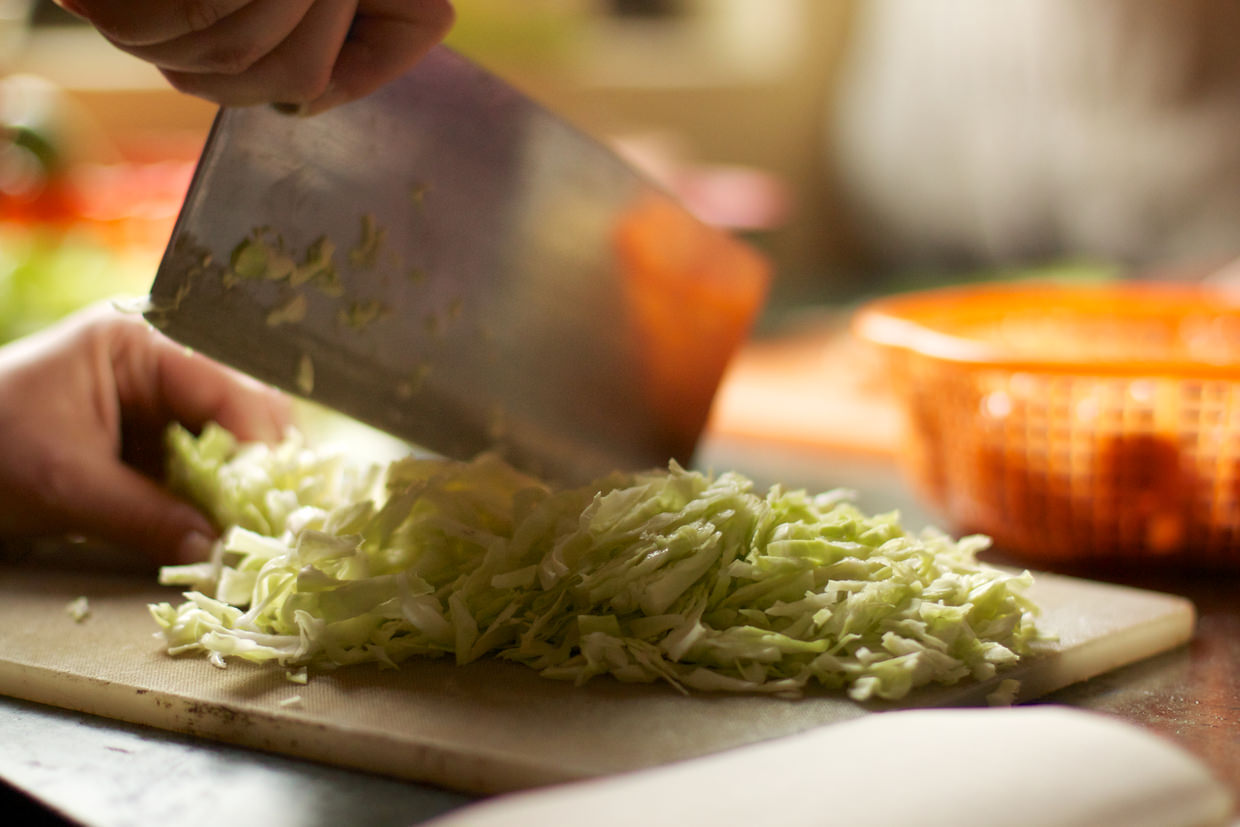
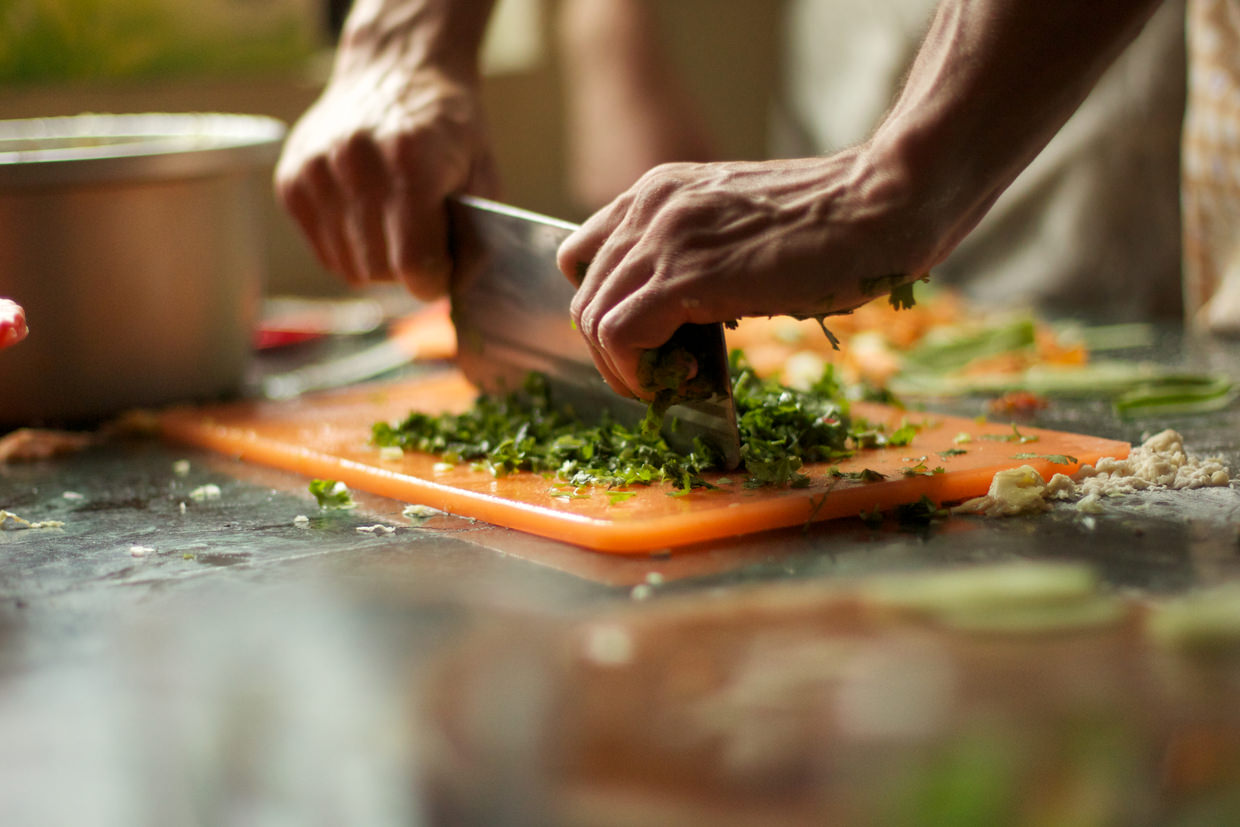
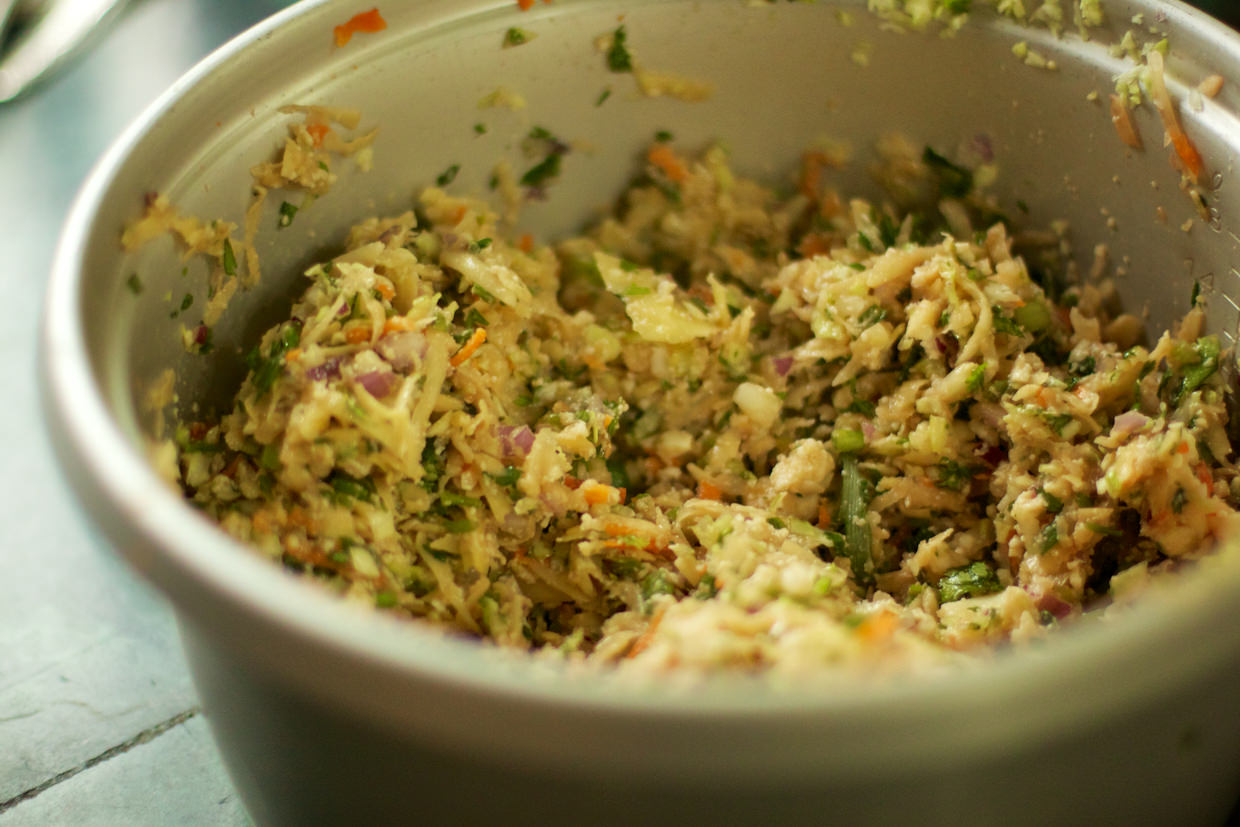

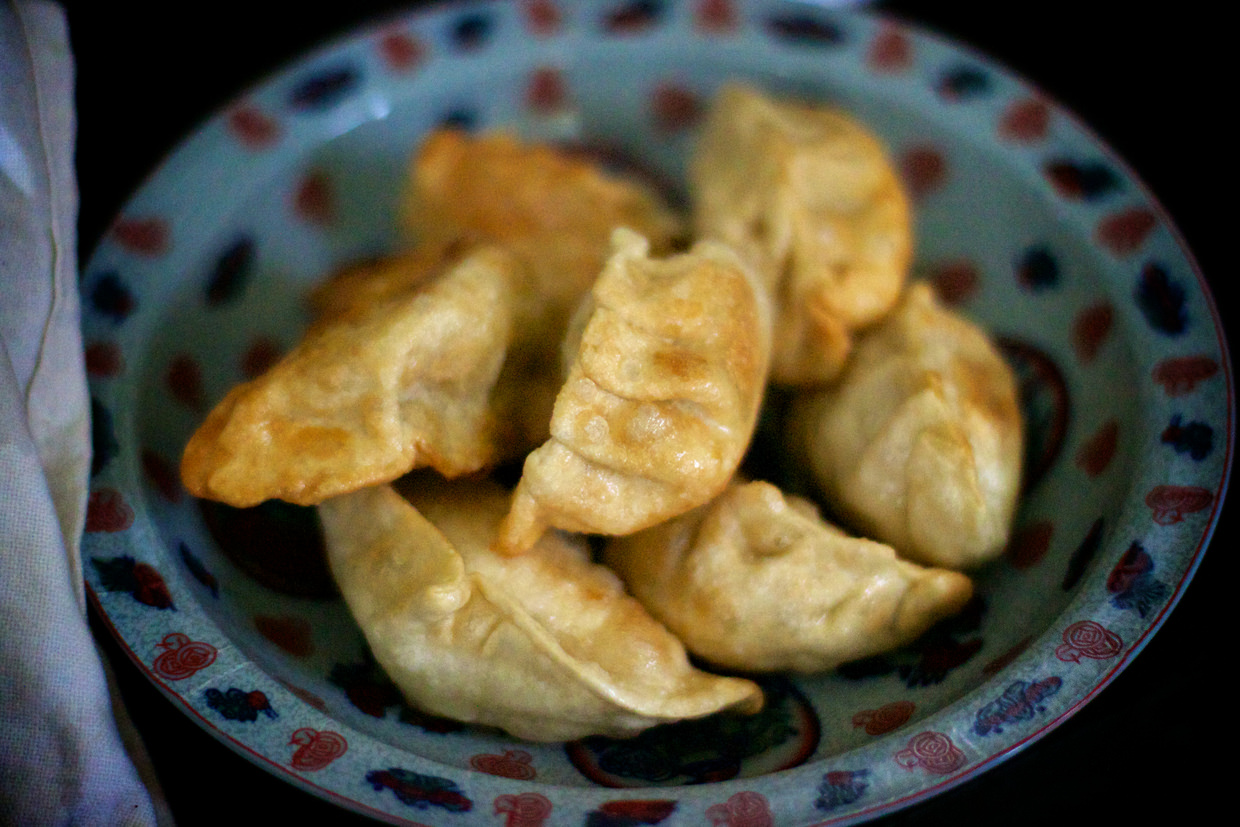
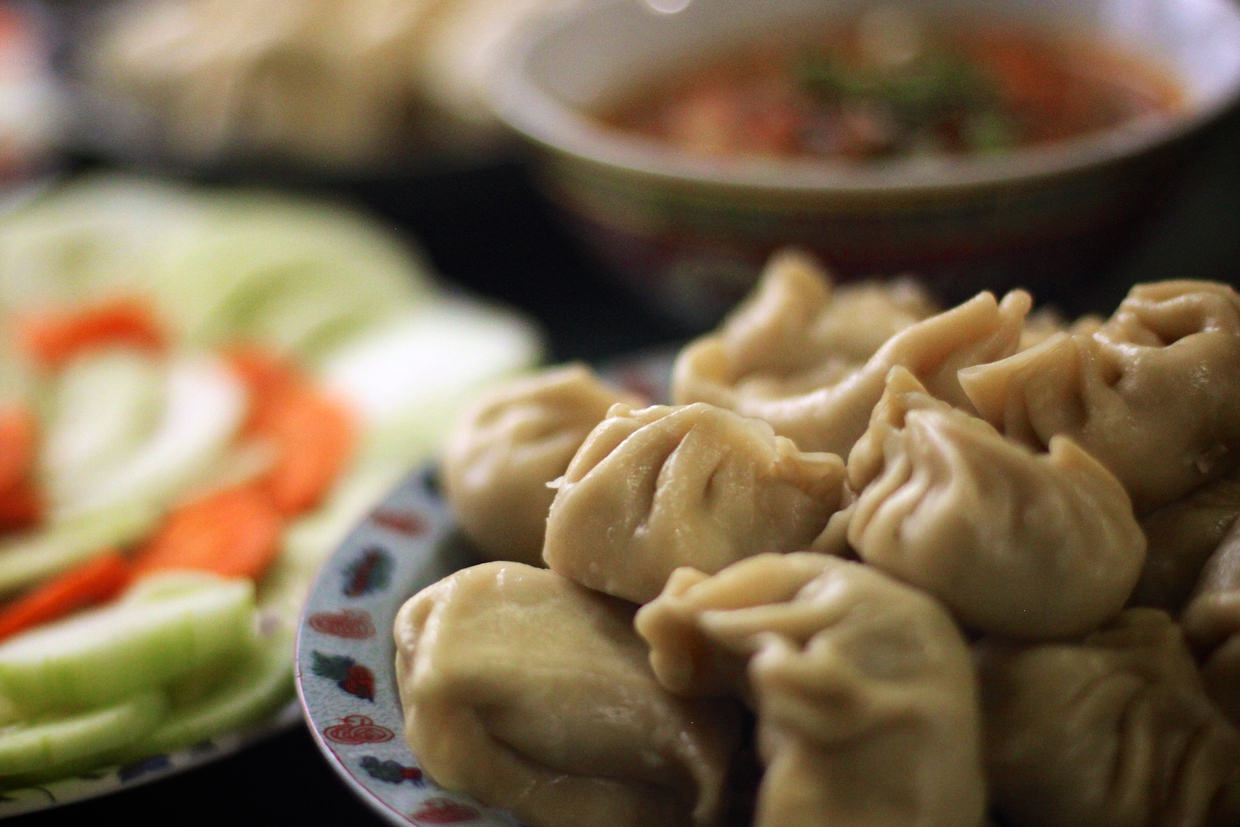
A quiet day in the rain
Every morning at Glacier Hotel we set alarms for 4:15am. If it wasn’t raining and if we could see stars from the rooftop, we’d make the before-dawn taxi ride up to Sarangkot. This morning, when the alarms rang, we could hear the pitter-patter of rain from our bed, and rolled over back to sleep.
It was overcast and wet for much of the day. Not suitable for a lakeside walk, or a paraglide, or a hike to the stupa — items on our todo list that would all remain unticked.
On the hotel rooftop we read our books and I wrote this blog, the hustle and bustle of Pokhara continuing beneath us. The lake was quiet, apparently not the day for an idyllic boat trip on the water, a lonely egret investigated the water’s edge. We could barely see the hills, let alone mountains.
The highlight of our day was a late lunch at Byanjan. On the terrace out the back with a view towards the lake we followed Darjeeling and mint tea with Indian; palak paneer curry, and a mutton rogan josh. Scrumptious!
Our evening meal at natssul was unremarkable.
